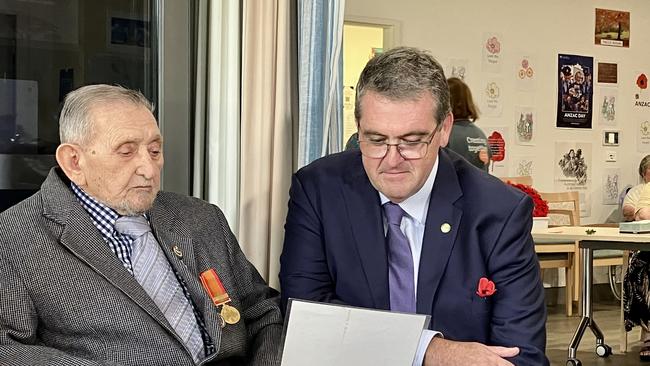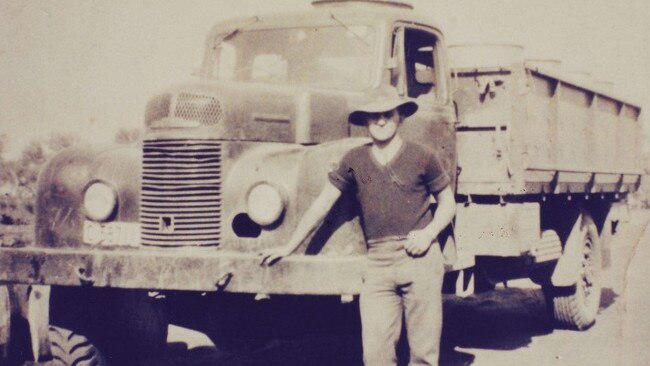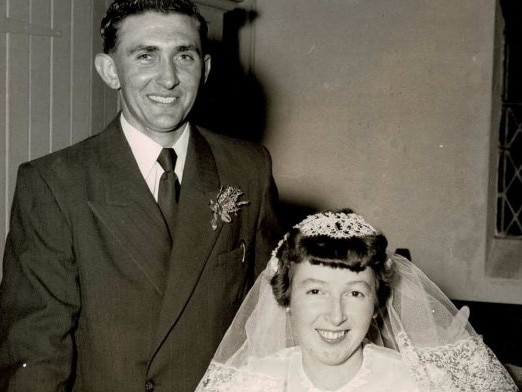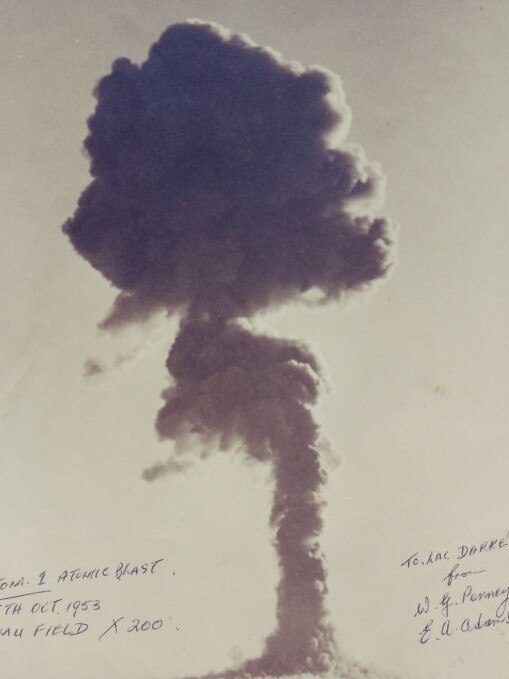Samuel ‘Sam’ Darke: Grafton man awarded Nuclear Test Medal for role in Operation Totem in 1953
A North Coast man has been honoured by the UK government for his role in a secret operation testing nuclear weapons in the Australian desert. The safety brief – look the other way and mind the flash. Here’s his story.

Grafton
Don't miss out on the headlines from Grafton. Followed categories will be added to My News.
A lifelong Graftonian has been honoured for his role testing nuclear weapons for the Allies as part of a top secret mission.
The safety brief – look the other way and mind the flash.
Samuel ‘Sam’ Darke, now aged 91, was presented with the prestigious Nuclear Test Medal on Wednesday, April 24, at his aged care home in Grafton.
The Nuclear Test Medal was announced by the British Government in 2021 and is in recognition of those service men and women involved in the UK’s Nuclear Testing Program.

“Those were the days,” Mr Darke said after he was awarded his medal.
“We were knocked of our bloody feet,” he added, describing the blast from the atomic bomb.
Clarence MP Richie Williamson presented Mr Darke his medal, as his family watched on.

“Today is a very special day, very significant day in the nation’s history,” Mr Williamson said.
“We are awarding Mr Samuel Darke a UK medal that has been specifically struck for his involvement in the Australia Nuclear Test Program.
“I’m in awe of Sam … to think that a man who has witnessed a nuclear bomb explode in the Australian desert … (is) quite remarkable.
“The safety instructions were not to look at the flash and turn your head.”

Mr Darke enlisted in Royal Australian Air Force (RAAF) when he was only 19-years-old.
While still a teenager, he was ordered on the top secret Operation Totem in 1953 – testing atomic weapons at Emu Field in the South Australian desert.
On October 15, the day of the first “mushroom cloud” detonation, Mr Darke was placed on three miles from the detonation site.
The Australian service personnel were in their normal uniform clothing of shorts and shirt, while the neighbouring English scientists, further afield, were entirely covered in protective clothing.
“At the time of detonation, myself and other personnel were standing out in the open,” Mr Darke remembered.
“The countdown started over the loudspeaker and no warnings were given except: ‘face in the opposite direction, close your eyes tightly and hands over your eyes tightly’,” he added.

Mr Darke said when the blast occurred he “felt a flash from the top of my head to the soles of my feet”.
“I felt heat. After a matter of seconds, the Sergeant said ‘right, you can turn around and look’,” he added.
“I turned around and saw an orange fireball rising.
“I could see dust and mulga trees moving and then the blast hit us. They gave us no warning. I was knocked over.”
Over the next couple of days Mr Darke’s job was to transport scientists around the detonation site. He also measured radioactive levels, once again wearing no protective gear, just shorts and a shirt.
He was given the option to volunteer for the second atomic detonation, but declined saying: “Once is enough”.




